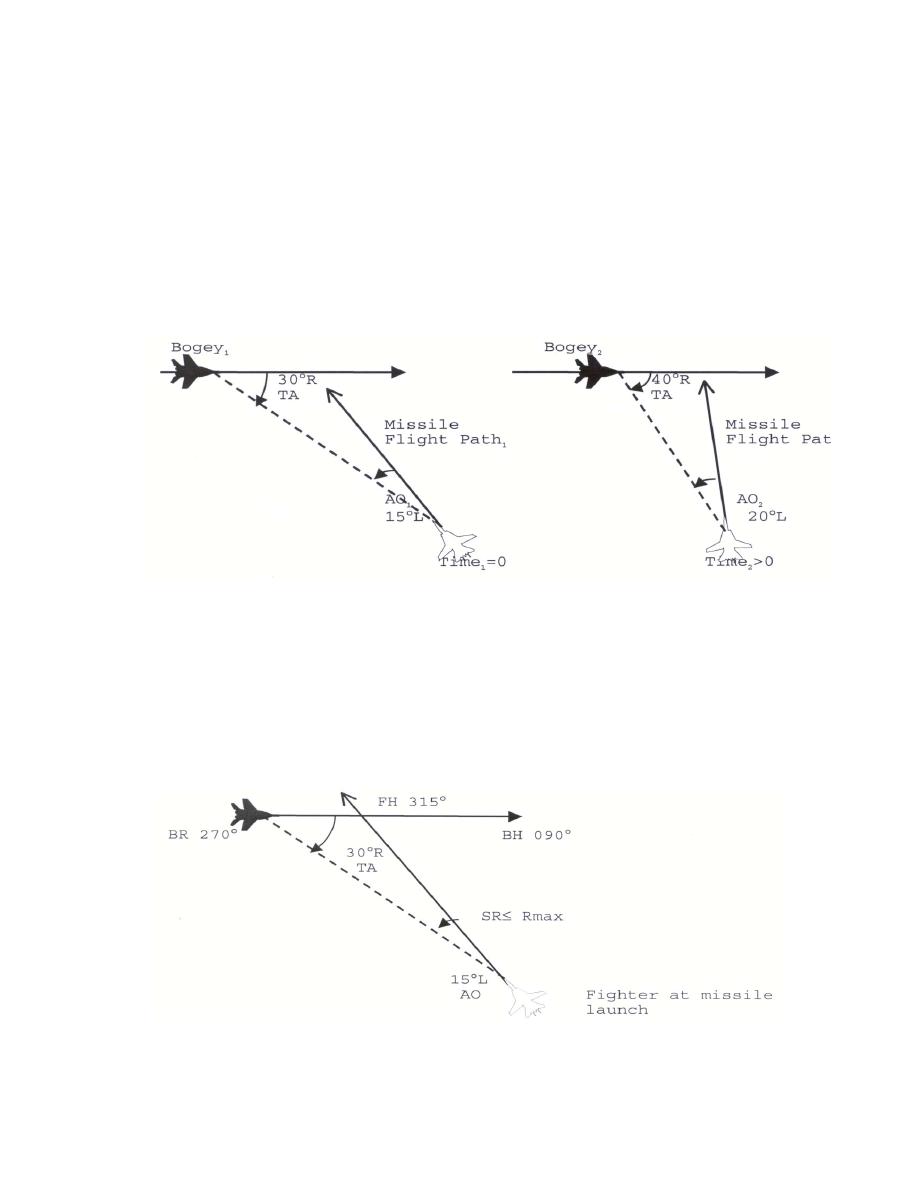 |
|||
|
|
|||
|
|
|||
| ||||||||||
|
|  INTERCEPT PROCEDURES TEXTBOOK
Effect on Target Aspect in Lead Collision
Lead collision comes at the expense of maintaining target aspect and angle off equal, but
opposite in direction, to each other. With angle off now less than target aspect, the bogey will
drift in such a way that TA increases over time.
Because the lead requirements are dependent upon target aspect, the fighter will be in the
proper position to fire the missile only momentarily. If any undue delay occurs, the fighter will
no longer be in position to satisfy the lead requirements, the dot will drift out of the circle, and
the fighter will miss a valid shot opportunity.
Figure 2
Establishing Lead Angle Off
Without the benefit of a fire control computer in the T-39N, the fighter must rely on a general
rule of thumb for establishing lead angle off. A knowledge of missile and aircraft speeds
indicates that for target aspects of 0 to 47 degrees, the lead required is roughly one-half the target
aspect. For example, with 30 R TA, the fighter would need to have its nose pointed 15 in front
of the bogey (15L AO) at Rmax.
Figure 3
116
|
|
Privacy Statement - Press Release - Copyright Information. - Contact Us |